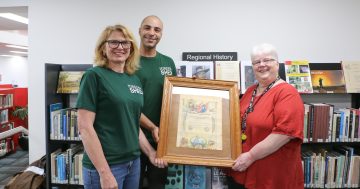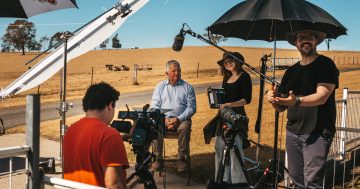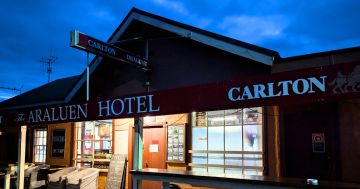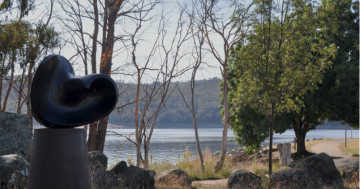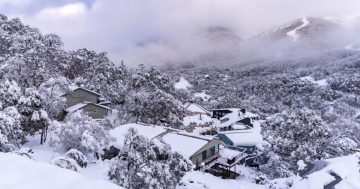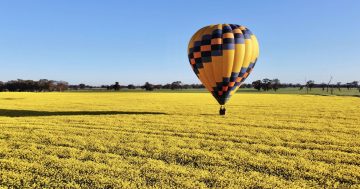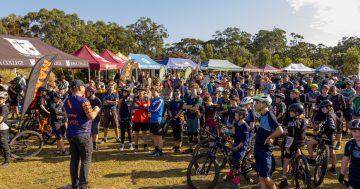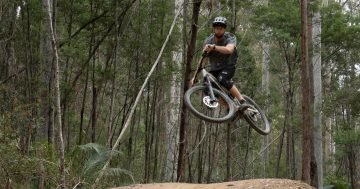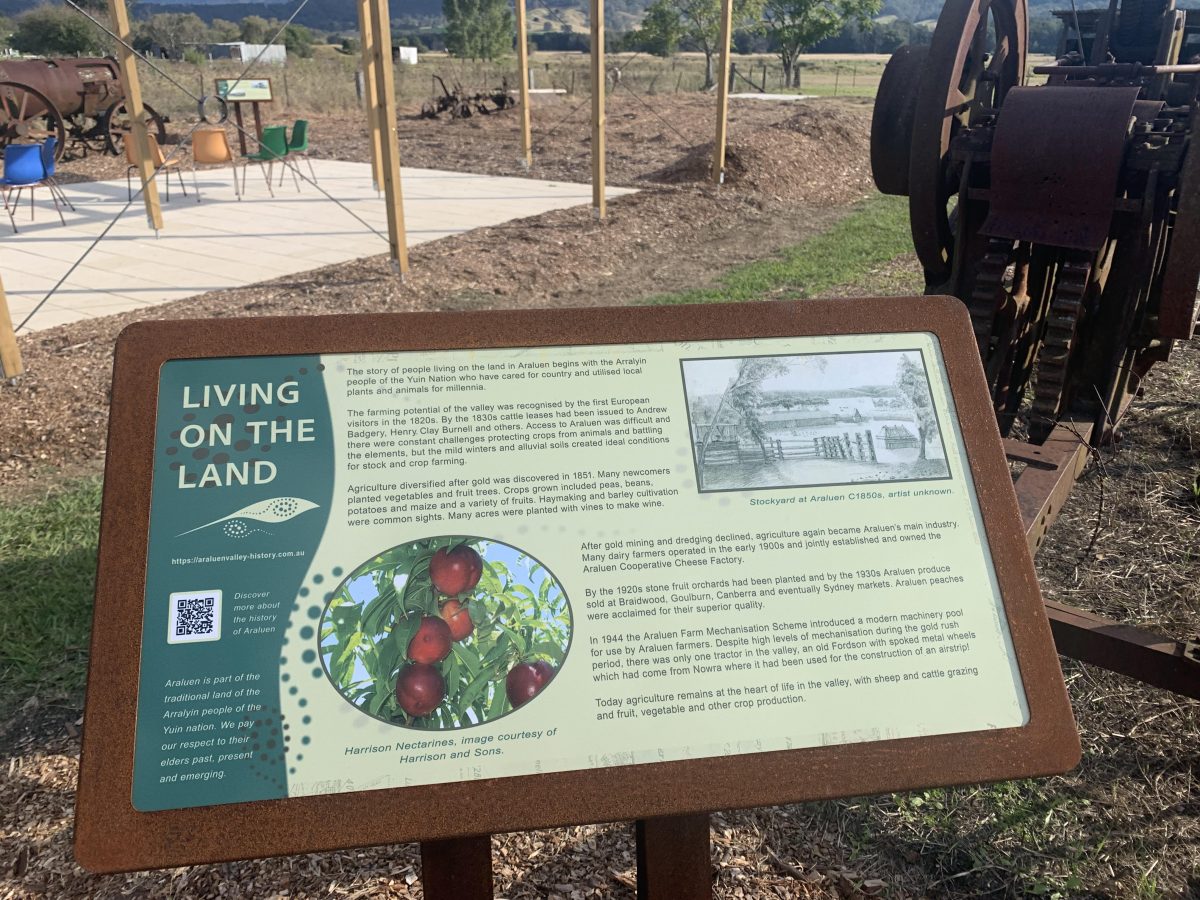
A set of new plaques have been installed across Araluen. They are all part of a plan to take people through the town’s long history. Photo: Laurann Yen.
Take a walk around Araluen, a town located a short drive from Braidwood, and a new attraction will catch your eye.
For Araluen History Group member Laurann Yen, the new Araluen History Trail brings the past into the present.
“So much of our history is ephemeral – timber that just disappears or rots into the ground, or stone that gets used for other purposes,” she said.
“As you go around the area, you wouldn’t know there were four towns there 100 years ago.
“Our job was to bring a sense of that back again, so people don’t lose sight of what actually happened in the [Araluen] Valley.”
The Araluen History Trail consists of 10 panels, each chronicling stages of the town’s history and development.
The panels have information on the Indigenous Walbunga people of the Yuin Nation, the gold rush of the latter 1800s, Araluen’s sporting prowess over the decades and other topics.
Work on the trail began in the aftermath of the Black Summer bushfires.
“Like many small communities around NSW, we lived with it for months and months,” Ms Yen said.
“That time brought the community together, because we had to work together.
“It just reminded us how vulnerable we all are in the face of natural disasters and how precious our lives are.”
Ms Yen remembers when the project kicked off.
“It will be two years in June since we first started,” she said.
“Our first meeting was on an absolutely perishingly cold day in Araluen, and we were sitting outside in the beer garden at the pub.
“The enthusiasm of all the people working on the history trail pulled me into it and kept me going.”
The 30-something members of the Araluen History Group spent months looking through the collection at the Braidwood Museum, searching Trove’s digital database and undertaking original research.
“We’ve used both hard and soft history research,” she said.
“It is so wide-ranging that we go from peach recipes to gold cradling!”
While some parts of Araluen’s history were well documented, there were also some surprises.
“We’ve had people who uncovered four or five hundred burial records for people in the area,” Ms Yen said.
“Until they’ve done that two or three years’ worth of work, people didn’t know most of those were there.”
Each panel in the history trail has a QR code linking to the Araluen Valley History website, a website made by the Araluen History Group to host their research.
Ms Yen said knowing the past was a necessary element in understanding the present.
“It is really important that we understand and acknowledge our past,” she said.
“Nearly all the work that’s happened has been voluntary work – it’s been thousands of hours of people’s time.
“With the [2019-20] fires coming through and with time passing by, we realised we needed to put a focus on conserving and preserving the history of the area.”
Ms Yen said the Araluen History Group was keen to continue expanding their records, with people invited to reach out with any information.
“[Doing this research] just reminds you of what a rich history so many of these small towns in NSW have – Araluen included – and how hard it is sometimes to be aware of it,” Ms Yen said.
“We’ve put together a website and trail we can be really proud of.
“That’s a gift that our generation of people in the valley can give to the next generation.”
The Araluen History Trail is now open after being opened as part of the Queanbeyan Palerang Heritage Festival, with the locations of the panels available online.







